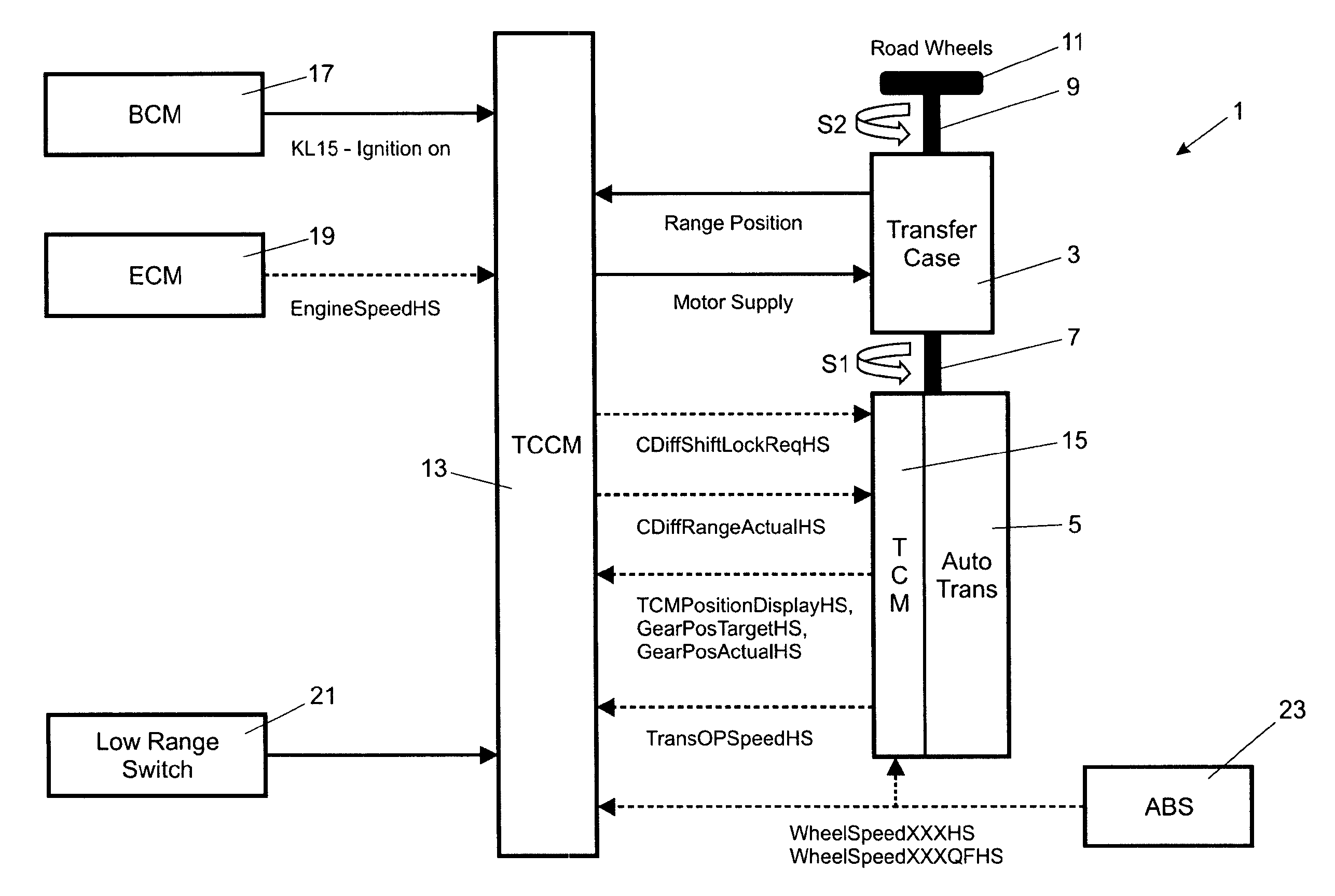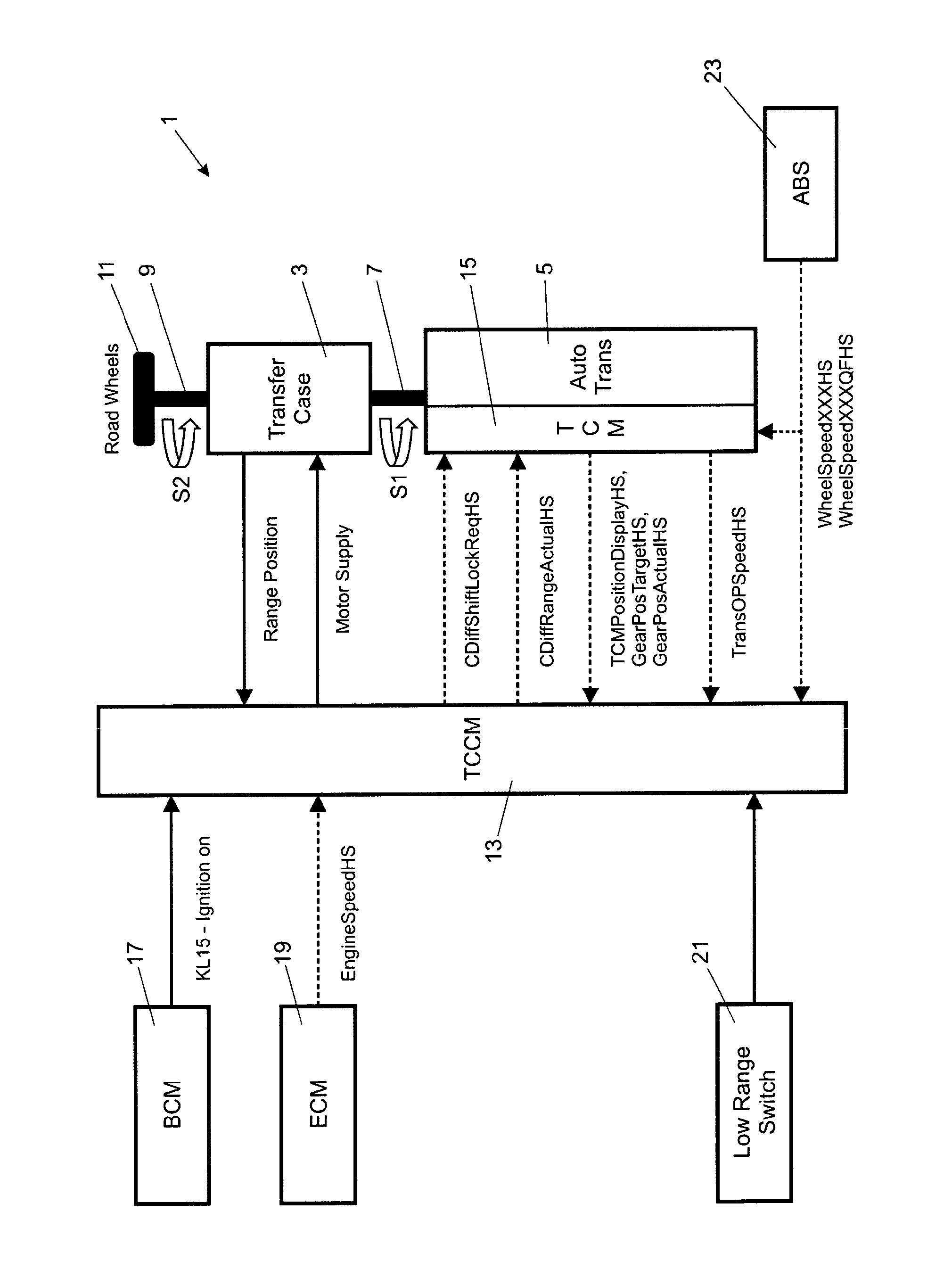Method and apparatus for controlling the engagement of an input gear with an output gear
a technology of input gear and output gear, which is applied in the direction of control devices, belts/chains/gearrings, gear elements, etc., can solve the problems of increased complexity and cost of the transfer case, additional maintenance, etc., and achieve the effect of reducing the output speed of the transmission, increasing torque, and increasing torque supplied
- Summary
- Abstract
- Description
- Claims
- Application Information
AI Technical Summary
Benefits of technology
Problems solved by technology
Method used
Image
Examples
Embodiment Construction
[0048]A transfer case control system 1 for a motor vehicle will now be described with reference to FIG. 1. The transfer case control system 1 controls a transfer case 3 (also referred to as a transfer box) and an automatic transmission 5. The transfer case 3 comprises a high input gear train and a low input gear train for respective high and low ranges. The transfer case control system 1 in accordance with the present invention allows on the move changes between the high and low ranges without the need for synchromesh gears in the transfer case 3.
[0049]The transfer case 3 is driven by a transfer case input shaft 7 connected to the output shaft of the transmission 5. The transfer case 3 has a transfer case output shaft 9 which drives a set of road wheels 11. The transfer case input shaft 7 rotates at a first speed S1 and the transfer case output shaft 9 rotates at a second speed S2. When operating in the low range the transfer case 3 provides a gear ratio of 3:1 to give the vehicle a...
PUM
 Login to View More
Login to View More Abstract
Description
Claims
Application Information
 Login to View More
Login to View More - R&D
- Intellectual Property
- Life Sciences
- Materials
- Tech Scout
- Unparalleled Data Quality
- Higher Quality Content
- 60% Fewer Hallucinations
Browse by: Latest US Patents, China's latest patents, Technical Efficacy Thesaurus, Application Domain, Technology Topic, Popular Technical Reports.
© 2025 PatSnap. All rights reserved.Legal|Privacy policy|Modern Slavery Act Transparency Statement|Sitemap|About US| Contact US: help@patsnap.com


